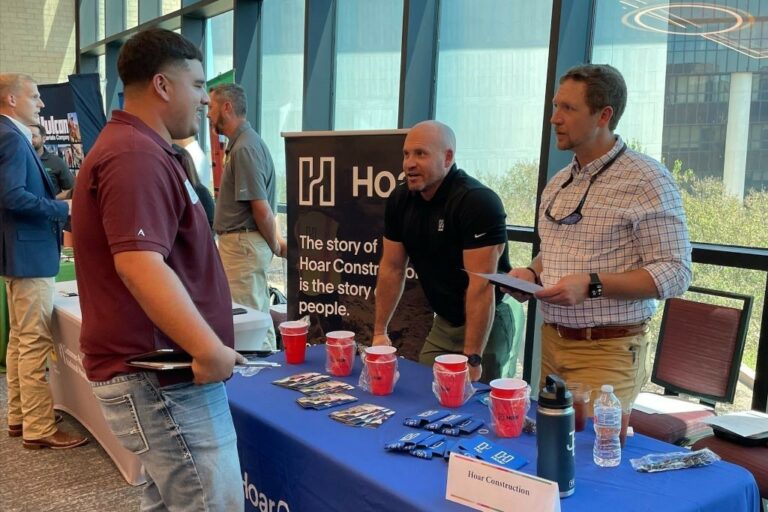
By Michael Raymond, Assistant Project Manager
Have you ever found yourself thinking, “This meeting could have been an email?” Or, when someone sends you a long text message, do you wish they would just pick up the phone and have a conversation? Everyone is different and has their own preferred method of communication. Some people don’t listen to their voicemails. Others would choose a face-to-face conversation over a phone call every time. Our clients are just as diverse, and our project teams tailor their approach to communication to fit the needs and preferences of each owner. We know which clients want daily updates and which clients would rather only be looped in when necessary. Then, COVID-19 hit the United States. Suddenly, our choices of communication and meetings were reduced. For our clients who preferred emails and phone calls to in-person meetings, things didn’t change much. But in many ways construction is a very traditional, “old school” industry. Many of our clients, trade partners, and colleagues are big fans of the sit-down meeting for all project updates and planning sessions. So, how do contractors maintain the same level of communication when you can’t be in the same room?
Is Something Missing?
First, let’s look at the pros and cons of communicating solely through emails, virtual conferencing platforms, and phone calls. There’s something to be said for being able to talk face-to-face with clients and project partners. It’s easier to build rapport and relationships. Anyone who has ever had to deliver difficult news to a client knows it’s a lot better do in person where you can read the room, than over a phone call. That few seconds of silence when you can’t see their face can seem like an eternity. And who doesn’t like to end a meeting with a handshake? It’s nice to be able to add a personal touch to communications with clients. We’ve held trade partner bids and project presentations virtually, and I think it’s hard to replicate the energy of an in-person presentation. To compensate, presenters have to prepare for that and work harder to make their information and content engaging in a virtual setting, since they can’t rely on personality and chemistry as much. However, I think our industry has done an excellent job of adapting and continuing to bid and award new work, using only virtual tools.
Travel Less, Meet More
It’s been several months since we all started holding more meetings virtually and I have definitely seen many benefits. For one, time spent traveling is all but eliminated. Say I had to travel to a project in Raleigh, North Carolina from my office in Birmingham, Alabama. I’d have to get to the airport an hour early, make my connecting flight in Atlanta, land in Raleigh, rent a car, drive to the job trailer, and then meet with my client and on-site project team. That’s a whole day spent traveling just to have a meeting. Now, I can click a button and join a virtual meeting with everyone I need to talk to and then immediately return to my work. I’m able to dedicate every working hour of the day to project-specific tasks and meetings. In addition, our clients are busy and in the past were traveling most of the week to various projects and business meetings. You had to find a time that worked for everyone and schedule a formal meeting. Now, with our clients traveling significantly less, we can meet more frequently if necessary or desired. If there’s an unforeseen challenge that needs urgent attention? We can send out a meeting invite and tackle the issue within minutes.
New Normal?
I don’t think you could ever build a project without a single in-person meeting. Why would you want to? There are some meetings that, when we’re able to do so safely, will always be held face-to-face. What I do think we’ll see change is a culture shift in our industry towards embracing virtual communications technology more often to reap the benefits it provides. This pandemic has forced us all to adapt and communicate in different ways. As a result, I think our industry has seen there’s a benefit to being more strategic and thoughtful in our communication methods. Do we need to fly 20 people out for this meeting? Or could we hold a virtual meeting and achieve the same result? Those questions could help us all save time, money, and productivity in the future, and make those select face-to-face meetings even more impactful.

